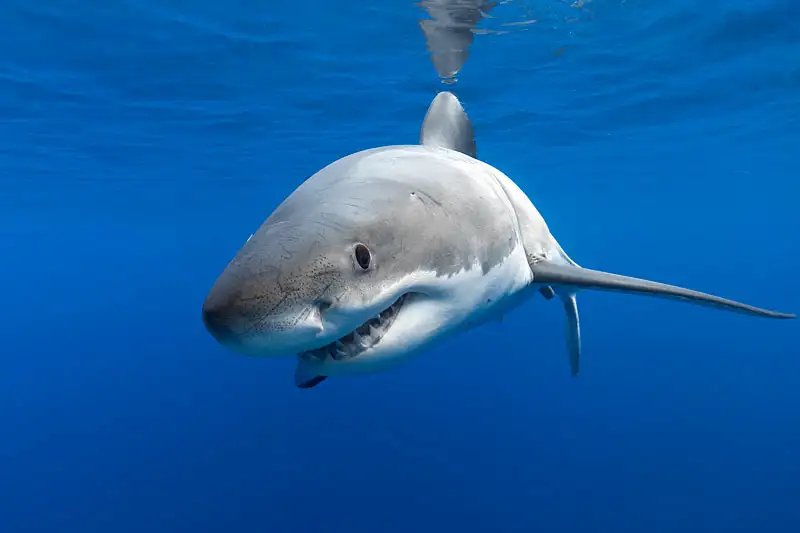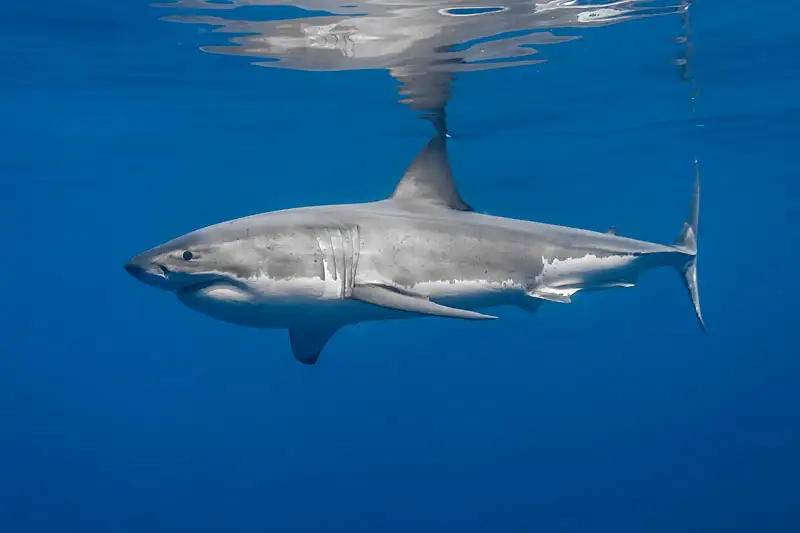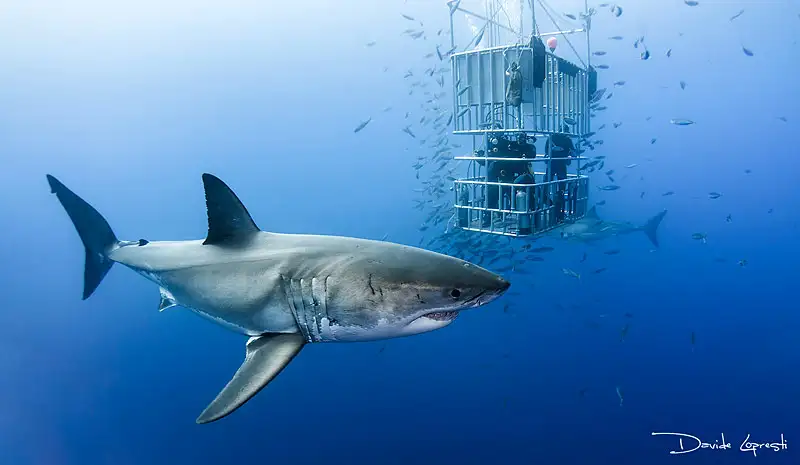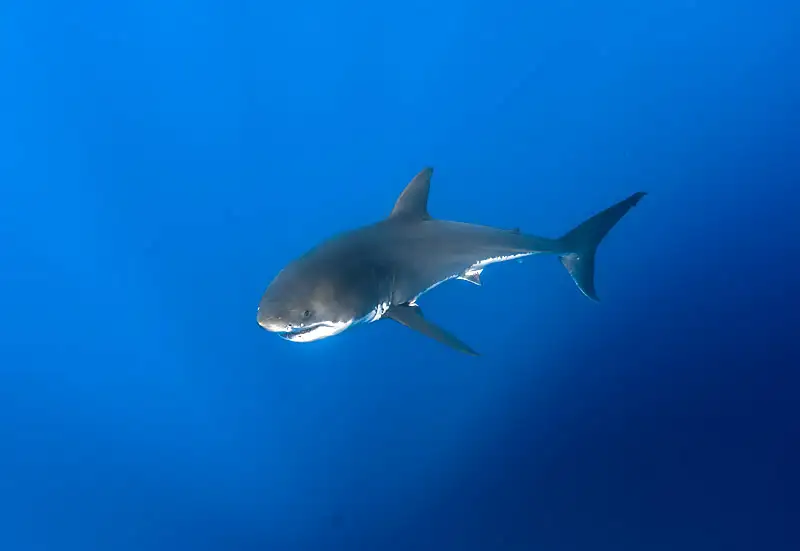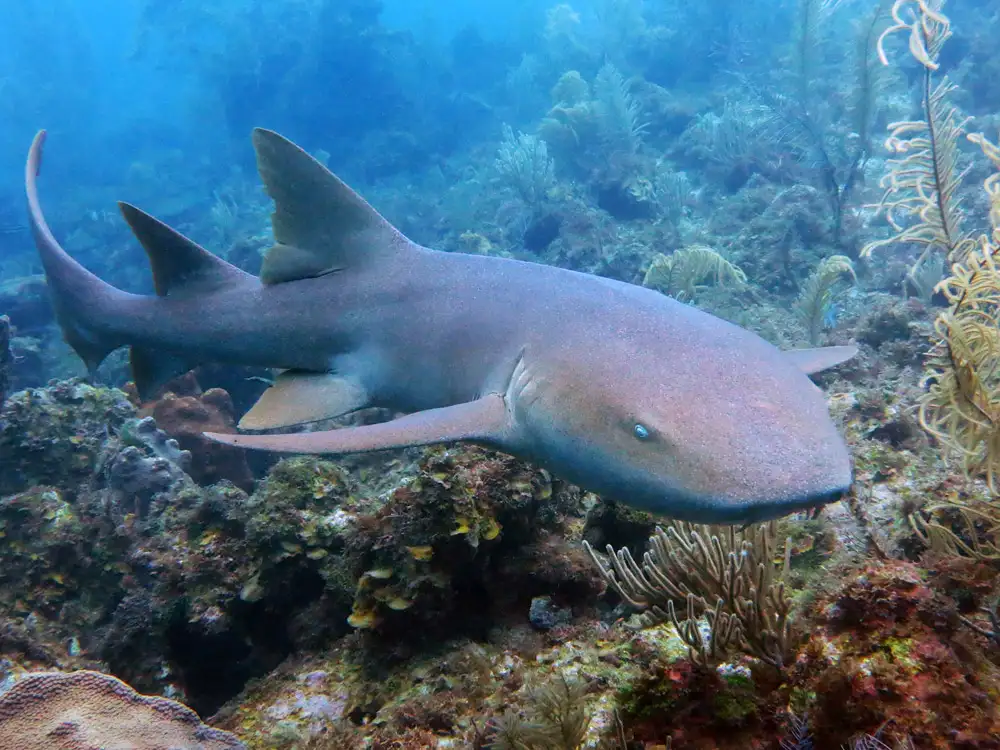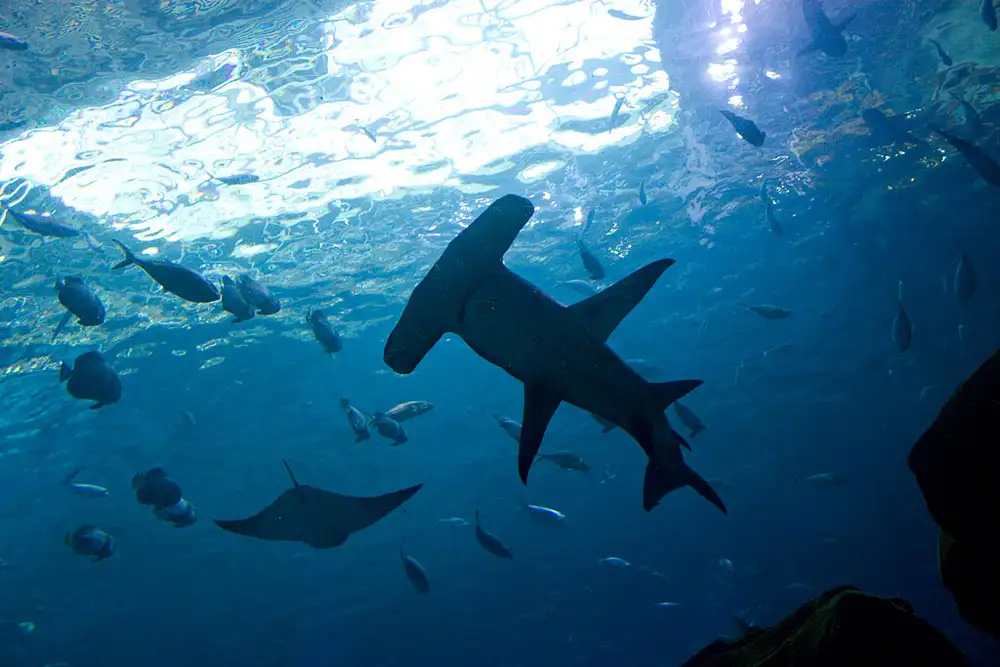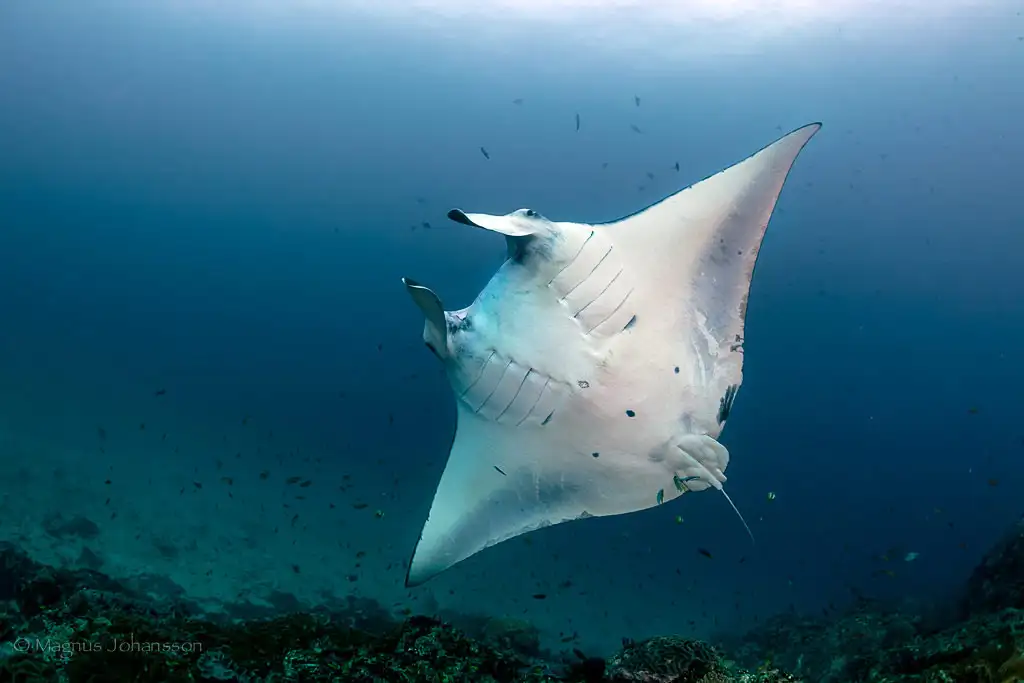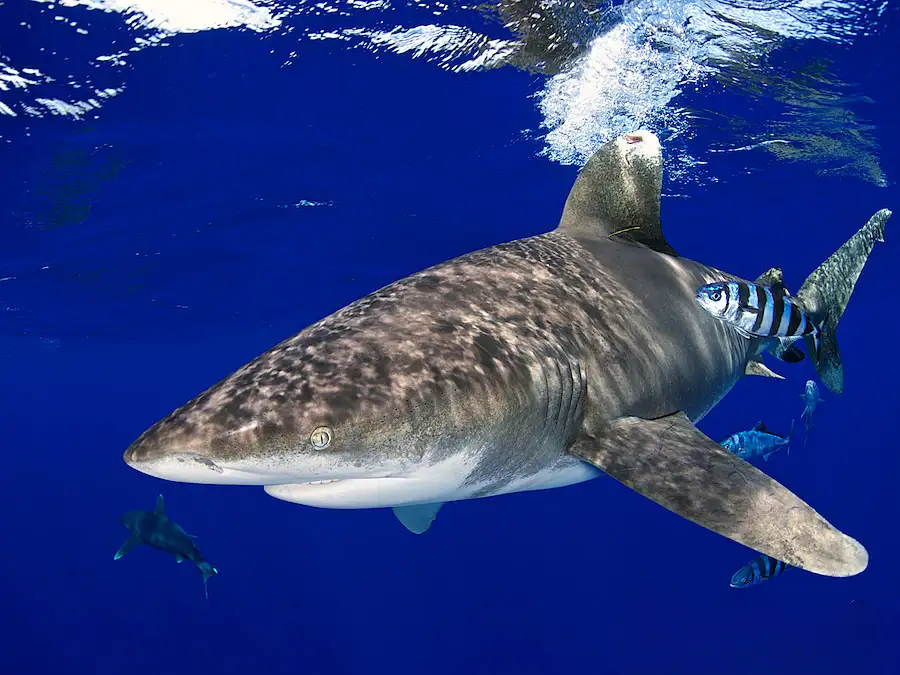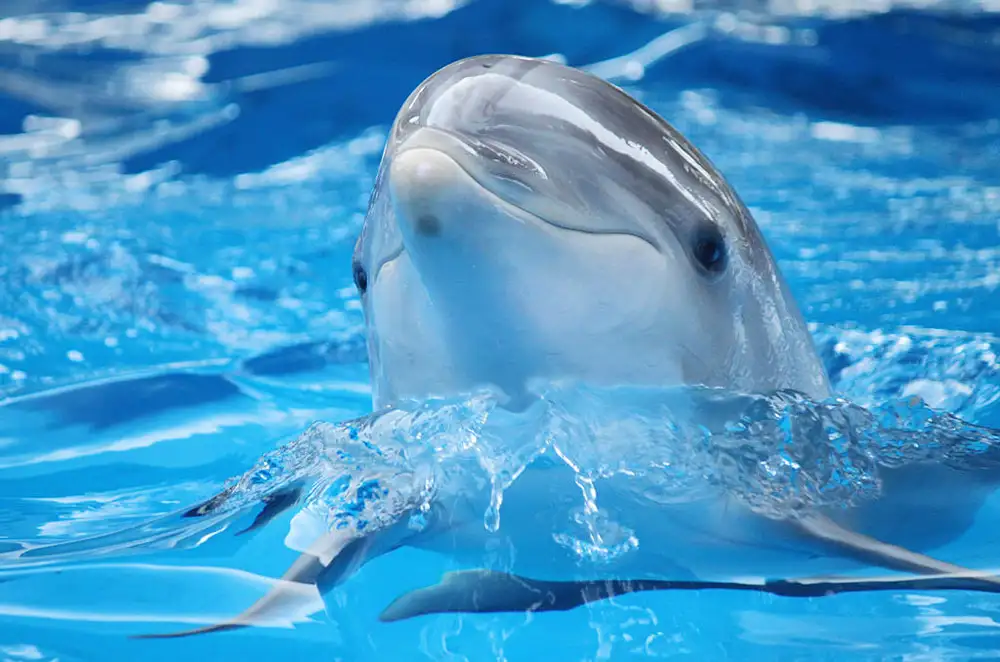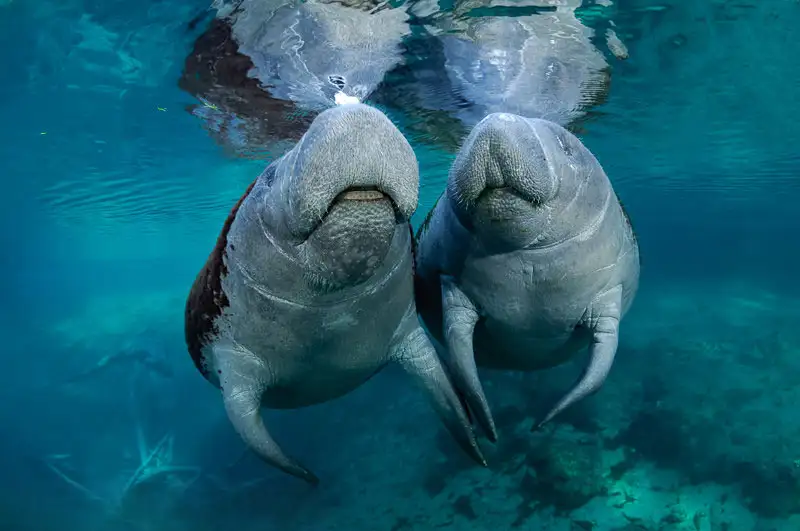Great White Shark
IUCN
VUBasic Information
Scientific classification
- name:Great White Shark
- Scientific Name:Carcharodon carcharias
- Outline:Large Fish
- Family:Lamnidae Carcharodon
Vital signs
- length:Commonly 3.5–5.5 m; very large individuals ~6+ m
- Weight:Typically 700–1100+ kg (larger possible)
- lifetime:c. 40–70 years (regional variation)
Feature
Apex predator; regional endothermy; high‑speed breaching; aplacental viviparous (oophagy); long migrations & site fidelity.
Distribution and Habitat
Temperate coastal shelves and slope waters near pinniped colonies, islands and upwelling zones worldwide.
Appearance
Slate‑grey back/white belly; large triangular first dorsal; crescent tail; triangular serrated teeth; conical head, short broad snout.
Details
The great white shark (Carcharodon carcharias) is a temperate to subtropical coastal apex predator in the family Lamnidae. It exhibits regional endothermy via a rete mirabile, elevating muscle and brain/eye temperatures. Diet includes pinnipeds, bony fishes, sharks and carrion. Global IUCN status: Vulnerable (VU).
Ecology & Life History
Ambushes prey near seal/sea‑lion colonies, often with high‑speed breaches. Undertakes long migrations with strong site fidelity to aggregation hotspots. Aplacental viviparous (oophagy): few pups, late maturity and low reproductive output.
Identification
Robust, conical head; short broad snout; slate‑grey dorsum and white belly with pronounced counter‑shading; large triangular first dorsal fin; crescent tail; large triangular serrated teeth for cutting large prey.
Range & Habitat
Recorded in many oceans, most common along temperate shelves and coasts—South Africa, Australia, California–Baja, Chile, New Zealand, Japan, the Mediterranean and more. Uses islands, headlands, upwelling zones and pinniped rookeries.
Threats & Conservation
Fishing pressure & bycatch in longlines/gillnets; historical targeting.
Illegal trade of fins, jaws and teeth; listed on CITES Appendix II.
Shark‑control gear & disturbance (drumlines/nets; poorly managed tourism and chumming).
Priorities: legal protection/enforcement, bycatch reduction (weak hooks, magnets/repellents, best‑practice live release), spatio‑temporal protection of nurseries/aggregation sites, telemetry & citizen‑science monitoring, and strict wildlife‑tourism codes.
FAQ
Q1. Do great whites attack people? Most incidents likely involve misidentification or investigative bites. Avoid pinniped hotspots, low visibility and dawn/dusk entries.
Q2. Why “warm‑bodied” sharks? A vascular heat‑exchange system elevates red‑muscle and brain/eye temperatures, boosting performance and sensing.
Q3. Longevity and reproduction? Lifespan several decades (up to ~70 yrs reported); late maturing with small litters—population recovery is slow.
Q4. Conservation status? Protected in many countries and on CITES II, yet illegal trade and bycatch remain major pressures.

